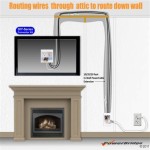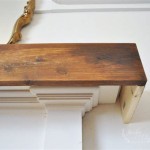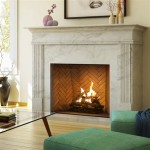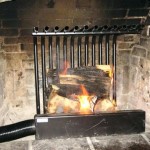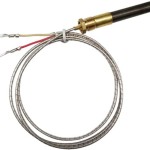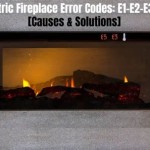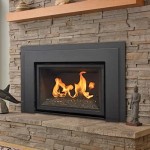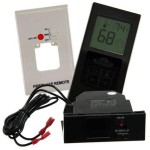Gas Fireplace Insert Efficiency Comparison: A Guide to Maximizing Heating Performance
Gas fireplace inserts offer a convenient and efficient alternative to traditional wood-burning fireplaces. They are designed to fit directly into existing fireplace openings, transforming a potentially inefficient, drafty hearth into a reliable and controllable heat source. The efficiency of a gas fireplace insert is a crucial factor to consider when selecting a model, as it directly impacts heating performance and overall energy costs. This article provides a comprehensive comparison of factors influencing gas fireplace insert efficiency, helping homeowners make informed decisions.
Understanding Gas Fireplace Insert Efficiency
Efficiency, in the context of gas fireplace inserts, refers to the percentage of fuel consumed that is converted into usable heat. It's a measure of how effectively the appliance utilizes the natural gas or propane to warm a designated space. A higher efficiency rating indicates less fuel waste and greater heat output for the amount of fuel burned. This translates to lower energy bills and a reduced environmental impact. There are two primary efficiency ratings to be aware of: Annual Fuel Utilization Efficiency (AFUE) and steady-state efficiency.
Annual Fuel Utilization Efficiency (AFUE): AFUE is a seasonal efficiency rating that reflects the overall efficiency of the insert throughout the heating season, taking into account start-up, shut-down, and cycling losses. It's a more comprehensive measurement than steady-state efficiency and provides a better indication of real-world performance.
Steady-State Efficiency: This rating measures the efficiency of the insert when it's operating at a constant output. It doesn't account for the energy wasted during start-up or when the insert cycles on and off. While useful for comparing the peak performance of different models, it's not as accurate a representation of day-to-day usage as AFUE.
It's essential to understand that the efficiency rating provided by manufacturers represents the appliance's performance under ideal laboratory conditions. Several factors can affect real-world efficiency, including the insulation of the home, the climate, and the user's heating habits.
Factors Influencing Gas Fireplace Insert Efficiency
Several design and operational characteristics contribute to the overall efficiency of a gas fireplace insert. Understanding these factors allows for a more nuanced comparison between different models.
Combustion Technology: The way in which the gas is burned significantly impacts efficiency. Modern gas fireplace inserts often employ advanced combustion technologies to maximize fuel utilization. Two prominent categories are conventional combustion and direct vent combustion.
Conventional Combustion: These inserts draw combustion air from within the room and vent exhaust gases up the existing chimney. They tend to be less efficient than direct vent models, as they can depressurize the room and draw in cold air from outside. They also rely on a properly functioning chimney draft to operate safely.
Direct Vent Combustion: Direct vent inserts are sealed systems that draw combustion air from outside the home through a dedicated vent pipe and exhaust combustion gases directly outdoors through a separate vent pipe within the same system. This eliminates the need for a chimney and prevents the insert from drawing air from the room, resulting in higher efficiency and improved safety. Direct vent systems are generally considered the superior choice for new installations and for replacing older, less efficient fireplaces.
Heat Exchanger Design: The heat exchanger is the component responsible for transferring heat from the combustion chamber to the surrounding air. Its design plays a pivotal role in efficiency. Heat exchangers with a larger surface area and optimized airflow patterns are more effective at extracting heat from the exhaust gases, resulting in higher efficiency. Materials used in the heat exchanger, such as cast iron or steel, also impact heat transfer and durability.
Blower System: Most gas fireplace inserts incorporate a blower fan to circulate heated air into the room. The blower effectively distributes heat more evenly and quickly, increasing the perceived warmth and overall heating efficiency. Models with variable-speed blowers offer greater control over airflow and noise levels.
Ignition System: The ignition system determines how the gas is ignited. Electronic ignition systems are more efficient than standing pilot lights, which continuously burn gas even when the fireplace is not in use. Electronic ignition systems only ignite the gas when needed, saving energy and reducing fuel costs. Some models feature intermittent pilot ignition (IPI), which automatically shuts off the pilot light when the fireplace is not in use for an extended period.
Zone Heating Capabilities: Gas fireplace inserts are well-suited for zone heating, which involves heating only the rooms that are being used. This can significantly reduce overall energy consumption compared to heating the entire house to the same temperature. By focusing heat on specific areas, homeowners can lower their thermostat setting and save on heating bills.
Smart Home Integration: Some newer gas fireplace inserts offer smart home integration, allowing users to control the fireplace remotely using a smartphone or other device. This enables users to adjust the temperature, set timers, and monitor energy consumption, further optimizing efficiency and convenience.
Comparing Efficiency Ratings and Choosing a Model
When comparing gas fireplace inserts, pay close attention to the AFUE and steady-state efficiency ratings. Prioritize models with higher AFUE ratings, as they provide a more accurate reflection of real-world performance. However, consider other factors as well, such as the heating capacity, venting requirements, and aesthetic design.
Heating Capacity: The heating capacity of a gas fireplace insert is measured in British Thermal Units (BTUs). Select a model with a BTU rating appropriate for the square footage of the area you intend to heat. An undersized insert will struggle to maintain a comfortable temperature, while an oversized insert may cycle on and off frequently, reducing efficiency.
Venting Requirements: The venting requirements of a gas fireplace insert will depend on whether it is a direct vent or conventional vent model. Direct vent models offer greater flexibility in terms of installation, as they can be vented horizontally or vertically. Conventional vent models require a functioning chimney.
Aesthetic Design: Gas fireplace inserts are available in a wide range of styles and finishes to complement any décor. Consider the aesthetic design when selecting a model to ensure it integrates seamlessly with the existing fireplace and surrounding room.
Long-Term Costs: While the initial purchase price of a gas fireplace insert is an important consideration, it's also essential to factor in long-term costs, such as fuel consumption and maintenance. A more efficient model may have a higher upfront cost but can save money in the long run through reduced energy bills. Also, consider the cost of installation, which can vary depending on the venting requirements and complexity of the installation.
Professional Installation: Gas fireplace inserts should be installed by a qualified professional to ensure safe and efficient operation. Proper installation is crucial for optimal performance and to prevent potential hazards, such as gas leaks and carbon monoxide poisoning. A professional installer can also advise on the best venting options and ensure that the insert is properly sized for the space. They can also confirm that the existing gas line is adequate and up to code.
Regular Maintenance: To maintain the efficiency of a gas fireplace insert, it's important to perform regular maintenance, such as cleaning the burner and inspecting the venting system. Follow the manufacturer's recommendations for maintenance schedules and procedures. A qualified technician should inspect the insert annually to ensure it is operating safely and efficiently.
Checking for Rebates and Incentives: Before purchasing a gas fireplace insert, check for available rebates and incentives from utility companies and government agencies. Many programs offer financial incentives for installing energy-efficient appliances, which can help offset the initial cost. These rebates and incentives vary by location and may have specific requirements, so it's essential to research the options available in your area.
In summary, selecting an efficient gas fireplace insert involves careful consideration of various factors, including AFUE ratings, combustion technology, heat exchanger design, and smart features. By understanding these elements, homeowners can make informed decisions that maximize heating performance, minimize energy costs, and create a warm and comfortable living environment.

Gas Fireplace Efficiency Vs Furnace Cost Comparison More

The Top 3 Reasons To Choose A Gas Insert Over Log Set Hearthside Hearth Blog

Advice For Gas Fireplaces Inserts Logs We Love Fire

Heat Efficiency A Comparison Of Four Systems Climatecare

Gas Fireplace Insert Vs Furnace A Comprehensive Comparison Inserts Guy

Key Differences Between A Gas Fireplace And Insert Newmarket News

Gas Logs Vs Inserts What To Know Home Hearth Outfitters

Gas Fireplace Faq Fireplaces Direct Learning Center

Best Gas Fireplace Inserts For Homeowners In 2024
.aspx?strip=all)
Top 11 Gas Fireplace Insert Trends Of 2024
Related Posts

